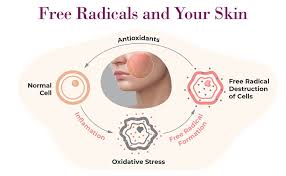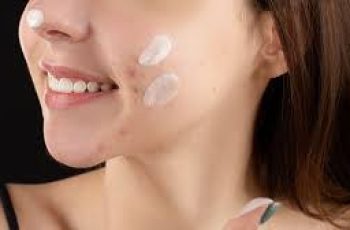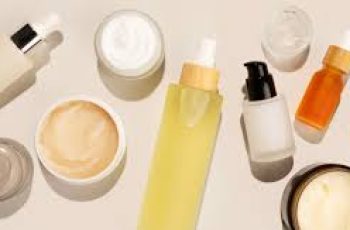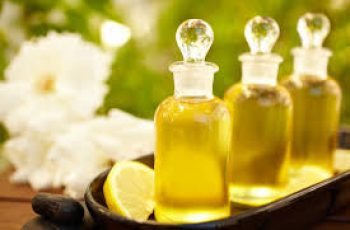
.webp)
.webp)
.webp)
The Truth About Free Radicals: A Deep Dive Into Skincare
.webp)
.webp)
When it comes to skincare, “free radicals” is a buzzword that often gets tossed around, but what does it actually mean, and why should we be concerned?
.webp)
.webp)
.webp)
In this article, we will explore the science of free radicals, also referred to as Reactive Oxygen Species (ROS), and their effects on our skin.
.webp)
.webp)
We will also discuss the causes of ROS, the harmful effects they have, and most importantly, the steps you can take to shield your skin from their damaging consequences.
.webp)
.webp)
.webp)
What Are Free Radicals?
.webp)
.webp)
Free radicals are unstable molecules, typically made from oxygen, that are missing an electron.
.webp)
.webp)
.webp)
This imbalance makes them highly reactive, and they search desperately for a missing electron from other molecules to achieve stability.
.webp)
.webp)
Think of them like a person craving chocolate—always searching for that one thing they need to feel complete.
.webp)
.webp)
.webp)
In the world of skincare, free radicals cause damage by stealing electrons from other molecules in your skin.
.webp)
.webp)
This process starts a chain reaction of oxidation, gradually leading to cellular damage and accelerated aging. The result? Wrinkles, sagging, and an overall tired, aged appearance.
.webp)
.webp)
.webp)
Understanding Reactive Oxygen Species (ROS)
.webp)
.webp)
In the skincare industry, ROS is often used interchangeably with free radicals. ROS are oxygen molecules that have either gained or lost electrons, making them chemically reactive.
.webp)
.webp)
.webp)
When these molecules interact with healthy skin cells, they generate oxidative stress. Over time, this stress can have long-lasting effects on skin health and appearance.
.webp)
.webp)
ROS can also refer to several types of reactive oxygen molecules, such as superoxide anion (O2-), hydrogen peroxide (H2O2), and hydroxyl radicals (OH·).
.webp)
.webp)
.webp)
While oxygen is essential for life and skin health, it can become problematic when it turns into a free radical, causing damage through its quest for an electron.
.webp)
.webp)
Causes of ROS: Internal and External Factors
.webp)
.webp)
.webp)
Free radicals and ROS are produced both internally and externally. On the internal front, our bodies naturally create ROS during normal cellular metabolism.
.webp)
.webp)
As cells use oxygen for energy production, small amounts of ROS are generated as byproducts.
.webp)
.webp)
.webp)
However, the presence of environmental stressors can amplify the production of ROS in the skin. These include:
.webp)
.webp)
UV radiation: Exposure to sunlight is one of the most significant external causes of ROS generation.
.webp)
.webp)
.webp)
Pollution: Particulate matter and chemicals in the air can trigger free radical production.
.webp)
.webp)
Cigarette smoke: Smoking introduces harmful toxins that produce ROS and accelerate skin aging.
.webp)
.webp)
.webp)
Medications: Some treatments, like chemotherapy drugs, can also increase oxidative stress in the body.
.webp)
.webp)
While we cannot completely avoid these external factors, understanding how they affect our skin can help us take steps to minimize their impact.
.webp)
.webp)
.webp)
Oxidation and Its Role in Skin Damage
.webp)
.webp)
Oxidation is a chemical reaction where molecules lose electrons and become oxidized. In skincare, oxidation can be triggered by exposure to environmental factors like UV rays and pollutants.
.webp)
.webp)
.webp)
When oxidation occurs, free radicals are produced, leading to a cascade of reactions that damage skin cells and speed up the aging process.
.webp)
.webp)
For instance, when your skin comes into contact with UV rays, the exposure triggers a chain reaction where molecules in your skin become oxidized.
.webp)
.webp)
.webp)
These oxidized molecules, now free radicals, can steal electrons from healthy skin cells, which leads to further oxidation and damage.
.webp)
.webp)
This cycle of oxidation and free radical generation results in what we call oxidative stress, a condition where the body’s natural defense systems are overwhelmed, and cellular damage accumulates over time.
.webp)
.webp)
.webp)
The skin’s response to oxidative stress is visible—early signs include wrinkles, fine lines, and a loss of elasticity.
.webp)
How Skincare Products Can Trigger ROS
Not only does the environment contribute to ROS production, but certain skincare products can also cause free radical generation.
In some cases, mixing incompatible ingredients can accelerate oxidation and cause oxidative stress.
For example, benzoyl peroxide, commonly used in acne treatments, can trigger oxidation when combined with other active ingredients, resulting in the formation of free radicals.
When products like benzoyl peroxide are mixed with ingredients such as ascorbic acid (Vitamin C), they can oxidize the Vitamin C, making it ineffective and potentially harmful.
This transformation leads to a less potent skincare routine and more damage to your skin over time.
Understanding how various ingredients interact is crucial in designing an effective skincare routine that minimizes the risk of oxidative damage.
Sunscreen and Free Radicals: The Surprising Truth
While sunscreen is essential for protecting your skin from harmful UV rays, some chemical sunscreens have been found to generate free radicals when exposed to sunlight.
This phenomenon happens because certain sunscreen ingredients, such as oxybenzone and avobenzone, can break down and form ROS when they absorb UV radiation.
Over time, the free radicals produced by these chemical sunscreens can cause oxidative stress, which may lead to skin inflammation, redness, and long-term damage. This condition is known as phototoxicity, where the reaction to UV exposure is intensified due to the sunscreen’s chemical breakdown.
To avoid this, consider switching to mineral sunscreens, which use physical blockers like zinc oxide or titanium dioxide.
These ingredients reflect UV rays away from your skin, reducing the risk of free radical formation.
Oxygen: The Double-Edged Sword
Oxygen is crucial for life and healthy skin, as it is necessary for cellular respiration and energy production.
However, when oxygen is applied topically through skincare products, it can sometimes exacerbate the problem by increasing ROS production.
Topical oxygen treatments, which claim to revitalize the skin by delivering pure oxygen to the epidermis, can actually increase ROS generation when oxygen molecules react with other substances on the skin.
These reactions can lead to the formation of harmful molecules like hydrogen peroxide, which further contribute to oxidative stress.
While oxygen is essential for skin health, too much of it in a concentrated form can tip the balance and create more harm than good.
The Harmful Effects of Free Radicals on the Skin
So, why are free radicals so harmful? Their ability to steal electrons from healthy molecules in the skin leads to a chain reaction of oxidative damage. This damage affects crucial skin components such as:
DNA: Free radicals can cause mutations in your skin cells’ DNA, which may result in premature aging or even skin cancer.
Proteins: Collagen and elastin are two essential proteins responsible for keeping your skin firm and youthful. Free radicals break these proteins down, causing sagging and loss of elasticity.
Lipids: The lipids in your skin help maintain its barrier function. When free radicals oxidize lipids, they can weaken the skin’s ability to protect itself from external aggressors.
In the long term, the cumulative damage from free radicals contributes to the visible signs of aging—fine lines, wrinkles, hyperpigmentation, and dull skin tone.
How to Protect Your Skin from Free Radicals
While it’s impossible to completely shield your skin from free radicals, there are several steps you can take to minimize their impact:
Wear Sunscreen Daily: The most effective way to protect your skin from ROS is by wearing a broad-spectrum sunscreen with SPF 30 or higher.
Sunscreen shields your skin from harmful UV radiation, which is one of the leading causes of ROS generation.
Incorporate Antioxidants into Your Skincare Routine: Antioxidants are molecules that neutralize free radicals and prevent them from causing damage. Look for products with ingredients like Vitamin C, Vitamin E, Niacinamide, and Green Tea Extract to protect your skin from oxidative stress.
Adopt a Healthy Lifestyle: A well-balanced diet rich in fruits and vegetables can provide your body with the necessary nutrients to fight oxidative damage.
Regular exercise, staying hydrated, and avoiding smoking and excessive alcohol consumption can also help reduce free radical production in the body.
Avoid Harsh Products: Be mindful of your skincare products and how they interact with each other. Avoid mixing ingredients that could cause oxidation, such as benzoyl peroxide and Vitamin C.
Use Mineral Sunscreens: Opt for physical sunscreens that use zinc oxide or titanium dioxide as active ingredients.
These ingredients reflect UV rays and do not contribute to ROS formation like chemical sunscreens can.
Conclusion
Free radicals and oxidative stress are key factors in the aging process, but understanding how they work gives us the tools to protect our skin.
By incorporating antioxidants into your skincare routine, protecting your skin from the sun, and being mindful of the products you use
You can minimize the damage caused by ROS and maintain a youthful, glowing complexion for years to come.
The fight against free radicals is ongoing, but with the right knowledge and proactive steps, you can keep your skin looking its best.
Remember, antioxidants are your skin’s best friend in the battle against free radicals, but they work best as part of a well-rounded, personalized skincare routine.



